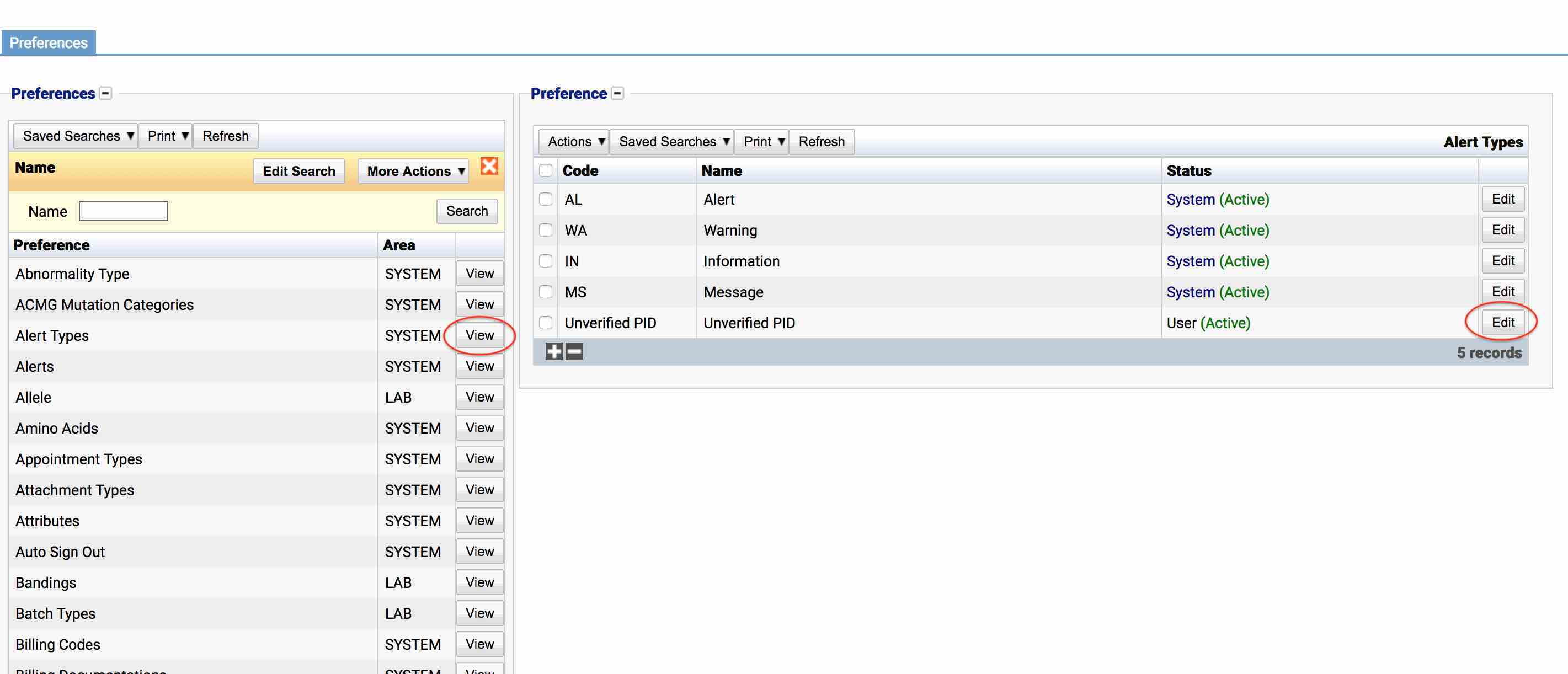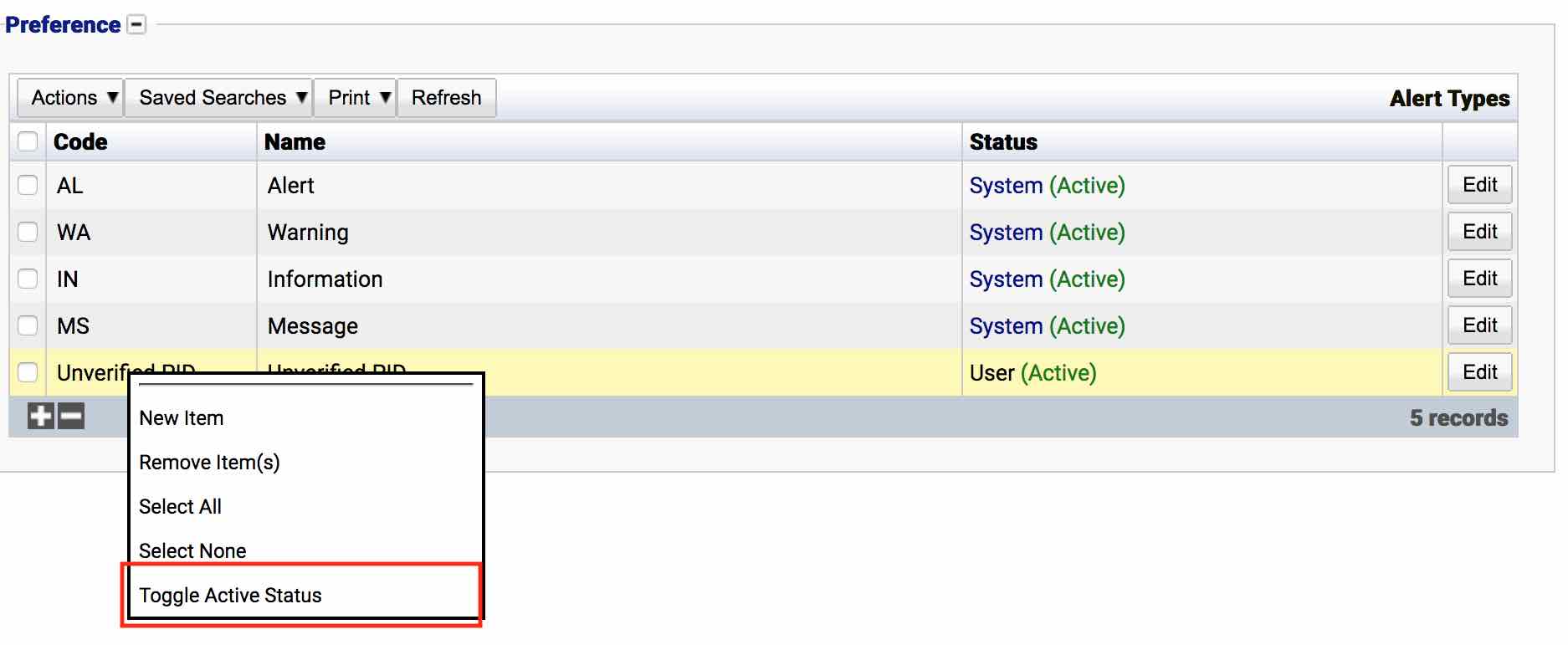Alert Types
Alert Type are used mainly in the patient area to define the type of alert messages that can be created on a patient. An alert type defines the colour and icon for the alert and is chosen by the user when adding a new alert.
Alert types are defined globally and are not limited per organisation unit.

In the above example the text will come from the alert itself, while the colour and icon are set in the alert types.
Location
The Alert Type preference is located under the Administration > Preferences area of iGene.
In order to access the preferences area, a user must be a member of a role that has the Administration: Preferences and Administration menu permissions assigned.
- Navigate to Administration > Preferences.
- Find Alert Types in the table and click View by either:
- Navigating through the Preferences table until the Alert Type preference is found.
- Performing a search using an existing saved search for Name = Alert Type.
- Performing a search using a newly created search. See the searching guide for information on how to create searches.
 3. To create a new Alert Type click the + button at the bottom of the table or select New Item from the Actions menu.
3. To create a new Alert Type click the + button at the bottom of the table or select New Item from the Actions menu.
4. To edit an existing Alert Type, click the Edit button.

The table of Alert Types will display the code, name and status for the alert type.
The Status field indicates two pieces of information:
User / System: User records have been added by users manually and are fully editable. System records are generally added via a data import or provided by default. Only the name can be edited on a system record.
Active / Inactive: Shows whether the record is currently active or inactive. Inactive items will not show up for selection for new records but will continue to show on entries that are using them.
Configuration
When adding or editing an alert type, users are presented with the below form to complete.
Always press Save in the bottom right hand corner of the browser after adding or editing an Alert Type.

Code
(Required, Unique)
A unique code for the alert type. This can be the same as the name but must be unique throughout the entire system.
Name
(Required)
A name for the preference. It is advisable to keep this unique.
Active
A checkbox to activate/deactivate an entry. If the preference is not active, it will not be able to be selected for future result but it will still show for existing results.
Colour
The colour to display alerts of this type with. Options are: red, green, blue, grey and orange.
Icon
The icon to display alerts of this type with. Options are:
Alert

Info

Warning

Note: A preview will be provided at the top of the screen when changing / setting the colour or icon of an alert type.
Deactivating / Activating
Each item has an active status that specifies whether the item is available for selection. When deactivating an item, it will no longer appear in autocomplete lists for selection, but will still be displayed on any records that continue to use it.
To deactivate (or reactivate) an alert type, either:
- Untick the Active checkbox inside the preference and Save.
Or
- Right-click on the required entry in the table and select Toggle Active Status. Click Yes when prompted.

The state of the alert type will then be changed to either Active or Inactive.

Usage
The Alert Type preference is used with the following items: